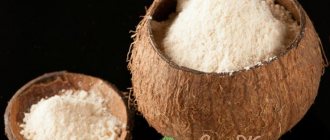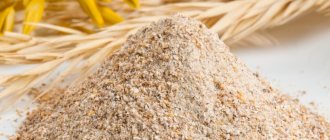Chemical composition of bell pepper
Bell pepper is a unique plant. Its fruits contain a large number of important vitamins and minerals.
Chemical composition:
- Vitamin A has a positive effect on vision and also has an antioxidant effect;
- vitamin PP is useful for the functioning of the heart and blood vessels, stabilizes cholesterol levels in the blood;
- Vitamin C supports the body’s immune strength and protects against infections;
- B vitamins, necessary for the functioning of the nervous system, help improve memory and increase stress resistance;
- vitamin E has a rejuvenating effect, accelerates the process of tissue regeneration;
- vitamin K affects blood clotting, helps restore bone tissue, and also participates in calcium metabolism in the body;
- beta-carotene is a very powerful antioxidant, necessary for maintaining vision and maintaining the body’s defenses;
- potassium fights sclerosis, removes accumulations of salts from the body;
- calcium is important for the health of teeth and bones, is involved in the supply of nerve impulses;
- phosphorus is necessary for cell life;
- magnesium supports the functioning of the cardiovascular system, distributes calcium and participates in the formation of bone tissue;
- sodium is necessary for optimal functioning of nerve impulses;
- iron is involved in gas exchange processes in cells and is necessary for the formation of hemoglobin;
- copper is necessary for the production of red blood cells, supports immunity;
- manganese stabilizes blood glucose levels, as it takes part in the production of necessary enzymes;
- selenium supports the health and functioning of the heart muscles;
- zinc increases immune strength and accelerates tissue regeneration.
The content of certain elements varies depending on the plant variety.
Nutritional value and calorie content of bell pepper
Pepper is a low-calorie product. Therefore, it is an integral part of dietary nutrition. On average, the calorie content per 100 grams of bell pepper is about 25 kcal. Nutritional value: proteins – 1.3 g, fats – 0 g, carbohydrates – 5.5 g.
The calorie content of a vegetable varies depending on the color:
- red – 26.8 kcal;
- yellow – 27.2 kcal;
- green – 23.2 kcal.
The type of processing also affects the calorie content of the product:
- boiled – 26 kcal;
- baked – 34 kcal;
- fried – 106 kcal;
- stewed – 29 kcal;
- lecho – 32.6 kcal.
When cooked, the vegetable loses some of its beneficial properties. Vegetable fats increase calorie content. Therefore, the benefits of fried bell pepper will be much less than from a fresh vegetable.
Calorie content
How many calories are in bell peppers? The fruits of the vegetable, which is also called sweet pepper, have a rather attractive appearance: they come in red, yellow, green colors with different shades. At its core, it is a pod made up of a skin that has grown together with the pulp, and a seed nest inside, tightly attached to the stalk.
Different types of bell peppers also differ in shape : they can be round, spherical, pyramidal, conical. Depending on the number of fruits and the method of their preparation, their calorie content .
Light salads containing bell pepper are tasty and healthy. It has virtually no calories, so even diabetics and people who exercise or are on a diet can eat it.
Calorie content per 100 grams of fresh product is about 25 kcal . Pickled peppers are higher in calories – up to 70 calories.
Bell peppers, eaten rolled up, are very popular. Its calorie content per 100 g. – no more than 80 calories.
Useful and medicinal properties of bell pepper
Due to its unique composition, the fruits are very beneficial for the human body. This plant has a wide range of medicinal effects in many areas.
The health benefits of bell pepper are as follows:
- helps improve immunity;
- serves as a prevention of cancer;
- improves blood composition;
- normalizes appetite and functioning of the digestive system;
- maintains visual acuity;
- normalizes blood pressure;
- helps the functioning of the nervous system, relieves depression well;
- improves memory.
Benefits of bell pepper for women
Red pepper is very useful for women:
- The plant helps eliminate discomfort during menstruation and reduces mood swings. It is useful to use at any age.
- Has a beneficial effect on the condition of the hair. Constant consumption of the vegetable makes hair smooth, healthy, eliminates dandruff and split ends.
- The calcium in the vegetable helps strengthen bones and teeth, smooth out wrinkles and heal wounds.
- Has a beneficial effect on the female reproductive system. Its use normalizes the functioning of the genital organs.
The benefits of bell pepper for men
The fruit is no less useful for men's health:
- Regular consumption of the vegetable increases potency and normalizes the functioning of the genital organs, increases sperm production.
- The beneficial substances in the plant protect the heart and reduce the risk of thrombosis.
- Eating pepper is beneficial for improving memory and brain activity.
- The plant helps cope with depression and fatigue, improves mood and performance.
Beneficial properties of pepper
Let's take a closer look at the benefits of bell pepper. This vegetable holds the record for vitamin C content. Ascorbic acid is necessary for the normal functioning of the body:
- strengthens immune processes, increases the body's resistance to infectious diseases;
- has a positive effect on the nervous system;
- helps strengthen the walls of blood vessels;
- helps a person absorb iron.
The highest content of ascorbic acid (from 250 mg per 100 g of product) is in red bell pepper, the benefits of which are beyond doubt.
How to grow peppers: step-by-step instructions and schemes for processing peppers on open ground and in greenhouse conditions (85 photos and videos)
How to feed peppers: how and what is the best way to feed peppers for growth in open ground and in a greenhouse (125 photos and videos)
Red pepper: beneficial properties and growing at home. Rules of care and use for medicinal purposes (115 photos + video)
In addition to vitamin C, the benefits of pepper are due to the high concentration of the following vitamins:
- carotene – important for normal vision;
- vitamin PP or nicotinic acid - plays a significant role in healthy neuropsychic activity;
- B vitamins - necessary for proper tissue respiration, ensure normal function of the skin, hematopoietic organs, and functioning of the nervous system.
The variety of minerals and vitamins contained in bell pepper determine its benefits and harm to human health.
The fruits contain calcium, potassium, phosphorus, ferrous, magnesium, iodide and other salts that regulate metabolism in the body.
At what age can bell peppers be given to children?
Young children should be given pepper with great caution. The plant can be harmful - cause an allergic reaction or disrupt the functioning of the gastrointestinal tract.
We recommend reading: Chard: beneficial properties and contraindications
In the first year of life, it is not recommended to give your child fresh vegetables. From 10 months of age, it is allowed to add pepper to the baby’s diet in the form of puree from a boiled vegetable. A child can be introduced to fresh vegetables no earlier than 1.5 years.
Important! A new product should be introduced into children's diets in small portions. Before starting complementary feeding, you should consult your pediatrician.
Restrictions and contraindications for the use of bell pepper
The benefits of bell pepper for human health are undeniable, but the vegetable should be consumed with caution. This is especially true for people with the following diseases:
- allergic reactions;
- hypervitaminosis;
- hypersensitivity;
- thrombophlebitis.
Cooked bell pepper is practically safe for allergy sufferers.
Pepper can cause irritation of the mucous membranes of the gastrointestinal tract and pain in the stomach. The ability of vegetable components to lower blood pressure can be dangerous for hypotensive patients. The consumption of vegetables is not recommended for those who have kidney and liver diseases.
Are bell peppers good for pregnancy?
Red bell pepper is very useful during pregnancy. The vegetable contains a large amount of essential substances that are important during pregnancy. In addition, it helps to cope with depression and nervous tension, improve the functioning of the digestive tract and improve immunity.
Pepper contains a lot of iron and helps cope with anemia, which very often occurs during pregnancy. In addition to providing the mother’s body with vitamins, pepper promotes the proper formation and development of the fetus due to the folic acid content in its composition. But excessive consumption can be harmful to health. Before use, be sure to consult a doctor.
Benefits for the female body
The vegetable is useful for pregnant women throughout pregnancy and lactation. When carrying a child, it prevents the appearance of congenital developmental pathologies, helps improve blood circulation in the mother’s body, removes excess fluid and salt from it, preventing edema.
Sweet peppers are also useful for pregnant women because they help cope with toxicosis. For breastfeeding women, it will be useful for its ability to normalize the psycho-emotional state, improve mood, and fight anxiety.
Pepper is useful for women not only during the period of bearing and feeding children, but also in other periods of their life, because it improves the condition of the skin and hair, strengthens nails and teeth.
Is it possible to have bell peppers for nursing mothers?
During lactation, it is also very beneficial for women to consume pepper in their diet. A large amount of vitamins, and especially vitamin C, helps to recover after childbirth and cope with depression.
Due to the high susceptibility to allergies, the product should be administered with caution. A nursing mother should adhere to the following rules:
- It is allowed to be introduced into the diet only after the baby turns 3 months old.
- Start with small portions and monitor the child's reaction.
- At first, the vegetable requires heat treatment - stewing, boiling or baking.
- If the child does not have a negative reaction to the vegetable, it is allowed to increase the portions and introduce the plant fresh.
Important! Failure to follow the instructions for administering the product may harm the baby: cause colic or an allergic reaction.
Contraindications
Bell peppers naturally ripen from mid-summer to early autumn. However, it decorates store shelves all year round.
It’s easy to explain: peppers are grown in greenhouses using nitrates and pesticides during processing, which, when accumulated in the body, can lead to cell mutation.
Therefore, even a healthy vegetable can be harmful to health. It is contraindicated for ischemia, low blood pressure, stomach ulcers, gastritis, gout, and allergic manifestations.
Orange and yellow varieties of pepper are the safest. It is advisable to consume it fresh during the ripening period. And the rest of the time, give preference to frozen vegetables, which retain all the substances beneficial to humans.
Heat treatment will also allow you to avoid the negative consequences of consuming this valuable vegetable and diversify your diet.
Bell pepper for weight loss
Pepper is a dietary product because it contains very little sugar and calories. The yellow fruit is the most nutritious, the green one the least. However, green vegetables are considered immature and therefore contain less nutrients than yellow or red ones.
There are many different diets based on bell peppers. Its use provides the body with necessary substances, cleanses it of toxins and promotes rapid weight loss due to its low calorie content.
Vegetable juice is often used in dietary nutrition. Bell pepper juice contains a concentration of all the benefits of the vegetable. You need to drink 50 ml daily. This product not only helps you lose weight, but also lowers cholesterol, strengthens hair and nails, and recharges the body with vitamins.
Benefits of bell pepper depending on color
No one doubts the benefits of the vibrant and juicy fruit. But few people know that the benefits of bell pepper for the human body vary depending on the color of the fruit.
Red bell pepper
The fruits of red bell peppers are very useful because they contain the largest amount of vitamins C and A. Due to this, they are very useful for increasing immunity and maintaining visual acuity. The brightness of the color is given by a special substance - lycopene. It is a powerful antioxidant and helps slow down the aging process of cells.
The red fruit should be used with caution by people with allergies and stomach problems.
Yellow bell pepper
Yellow fruits contain a lot of carotene, potassium and phosphorus. Such peppers are very useful for older people, as they protect the heart and blood vessels. In addition, it is useful to consume yellow vegetables during periods of mental stress, as it improves memory and concentration, fights depression and insomnia.
The benefit of yellow bell pepper is also its high iron content, which helps treat anemia, and high concentration of lutein for visual acuity.
Green bell pepper
Green fruits are dietary. They contain many phytosterols that normalize fat metabolism. The calorie content of such a vegetable is only 23 kcal, which makes it an indispensable product in the diet.
Additional benefits of green bell pepper:
- stabilizes cholesterol levels;
- removes toxins;
- increases the elasticity of the walls of blood vessels;
- accelerates all metabolic processes.
The color of the fruit may have other colors. Such varieties are the result of selection by gardeners. The benefits of purple or orange bell peppers will be no less than those of vegetables of the usual shades.
Dietary product
Sweet peppers are popular among people on diets. The vegetable is low in calories. 100 g of bell pepper contains 20-30 kcal, depending on the color of the fruit. Green fruits have the lowest calorie content, while yellow fruits have the highest calorie content.
Proponents of dietary nutrition should remember that eating these fruits increases the secretion of gastric juice, thereby improving metabolism and increasing appetite. Eating low-calorie foods promotes weight loss.
Which pepper is healthier: sweet or bitter?
The bitter fruit is practically no different in its benefits from the sweet one. It also contains many useful substances. To replenish vitamins and minerals, a person needs to eat several peppers a day.
This is a real problem, because not every person can eat even one whole fruit. When consuming a large amount of hot pepper, severe irritation of the gastrointestinal mucosa occurs, which can lead to complications including ulcerative lesions. Therefore, bitter varieties of pepper are used mainly as a spice in small concentrations when preparing dishes.
In what form is it better to eat bell pepper?
To preserve all the beneficial substances in bell peppers, it is best to consume them fresh. During heat treatment, the amount of microelements and vitamins decreases. The benefits of boiled bell pepper will be approximately 70% less than fresh ones. This is especially true for vitamin C: it is destroyed under the influence of high temperatures.
We recommend reading: Beneficial properties of dill for women and men
But for some diseases of the gastrointestinal tract, the consumption of fresh vegetables is prohibited, which in unprocessed form can aggravate the situation. In this case, it is necessary to process it as little as possible in order to retain all the benefits. For example, immerse it in already boiling water, avoiding boiling.
Despite the fact that some of the benefits decrease after processing, it is still recommended to use it in any form - baking, canning, stewing, etc.
It is believed that bell pepper seeds should not be eaten. The reason for this is the opinion that they are toxic and harmful to health. But it has been scientifically proven that bell pepper seeds have no less health benefits than the fruits themselves. They can be dried, crushed and added to food.
The fruits themselves can be frozen. Frozen bell peppers retain all their benefits for a long time. After defrosting, it can also be boiled, stewed, baked, etc.
Bell pepper - benefits in fresh and cooked form
The maximum benefit of pepper for the human body can only be obtained by consuming it fresh. After heat treatment, the vegetable loses up to 70% of its vitamins. But in the cold season, when access to fresh vegetables is limited, cooked or canned bell peppers will undoubtedly be useful.
The benefits of pepper are fully preserved in the frozen product.
Freezing will help preserve the product and its beneficial properties for a long time. In this form, pepper retains almost all vitamins. To prevent vegetables from taking up much space, it is recommended to chop them and place them in portioned freezer bags.
Features of using bell pepper for diseases
Eating sweet peppers brings not only benefits to the human body, but also harm. The plant has certain contraindications and requires compliance with certain precautions. For some diseases, you need to use it very carefully so as not to harm your health.
For diabetes
If you have diabetes, sweet peppers can not only be consumed, but also necessary. It saturates the body with useful substances and normalizes glucose metabolism. For diabetes, it is allowed fresh or baked, but it is better to avoid fried or pickled options.
For gout
The diet for gout is very similar to the diet for diabetes. In this case, it is also very useful and helps to alleviate the patient’s condition. Before use, be sure to consult a specialist.
The plant can be consumed fresh, baked or stewed. Frying and pickling are prohibited as they can worsen the patient’s well-being.
For gastritis
Gastritis is an inflammation of the stomach lining. In such situations, patients are prohibited from consuming the acute type of plant. Sweet varieties are allowed in limited quantities.
During exacerbations of the disease, it is better to refuse to eat dishes with pepper or subject the vegetable to thorough heat treatment. This will help reduce the vitamin C content and reduce the negative effects on the stomach.
For pancreatitis
Pancreatitis requires gentle nutrition that will not irritate the diseased organ. Pepper promotes the production of enzymes and can worsen the patient's condition. During the period of exacerbation, the vegetable is strictly prohibited; during remission, it can be consumed in stewed or boiled form.
To cook or not to cook?
The value of any vegetable is, first of all, its vitamins. Pepper is no exception. By consuming it raw, a person receives maximum benefits.
Cooking leads to a decrease in nutrients, and vitamin C is completely destroyed when heated.
Growing cabbage in open ground - a detailed description of caring for and planting cabbage heads (video + 105 photos)
Ramiro pepper - 95 photos and description of the nuances of growing a special variety of pepper
Pepper seedlings: 100 photos of proper seedling cultivation and a video master class on planting peppers using seedlings
However, allergies or stomach diseases do not allow you to use pepper raw. The golden mean lies in skillful preparation. The vegetable can be lightly stewed or placed in boiling water for two to three minutes, without allowing it to boil.
Benefits of bell pepper for facial skin
The fruits of the plant are widely used for cosmetic purposes. The high content of vitamins has a rejuvenating, toning and regenerating effect on the skin. After masks based on pepper, wrinkles are smoothed out, complexion is refreshed, and pores are cleansed.
The vegetable is suitable for all skin types. It is recommended to make masks at least once a week. Before application, it is recommended to test for an allergic reaction.
Bell pepper face mask
Examples of masks:
- Toning mask. Remove the seeds from the washed vegetable, grate it on a fine grater or grind it in a blender, apply the pulp to a napkin or gauze and then apply it to your face. Leave for 15-20 minutes. After this, rinse with warm water or herbal decoction.
- Cleansing mask. Grind the washed fruit, add the white of 1 egg and a tablespoon of kefir. Apply the resulting mixture to your face and leave for 20 minutes. After this, rinse thoroughly and apply nourishing cream.
- Whitening mask. Add a few drops of lemon juice to the crushed pepper pulp and apply to your face. Only areas with pigmentation can be treated with the product. Wash off with a damp cloth.
Bell pepper juice tonic
An excellent daily care product is a tonic made from pepper juice. To prepare it, you need to mix a couple of tablespoons of the crushed fruit of the plant and 1/4 cup of low-fat milk. Let it brew for half an hour. Store the finished tonic in the refrigerator. Every day, soak a cotton swab in the product and wipe your face well. After the procedure, wash with water.










